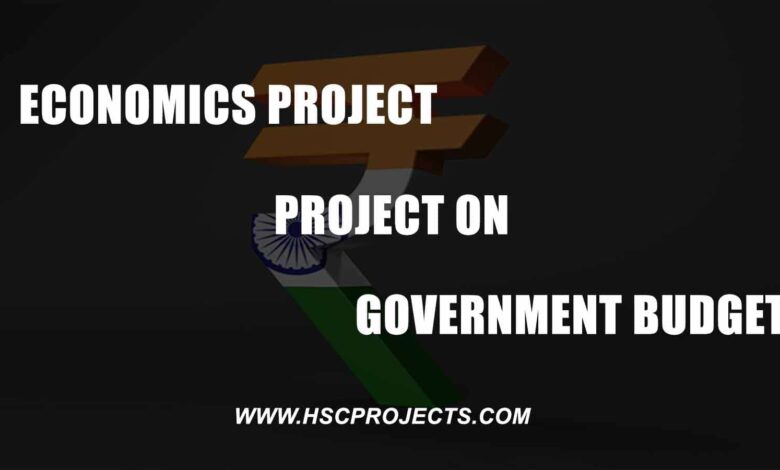
Economics Project on Government Budget – Class 12 CBSE
INTRODUCTION:
A Government Budget is an annual statement presenting the Government’s proposed revenues and spending for a financial year that is often passed by the legislature, approved by the Chief Executive or president, and presented by the finance minister to the nation. The budget is also known as the Annual Financial Statement of the country. This document estimates the anticipated government expenditures for the ensuing financial year. For example, Property Tax.
MEANING:
In the modern world, every Government aims at maximizing the welfare of its country. It requires several infrastructural economics and welfare activities. This required appropriate planning and policy of the Government, which is called the Budget. All these activities related to Infrastructure, Welfare, and Economic growth depend upon one thing. The solution to all these problems is known as the ‘Budget.’
“A budget is a document containing detailed programs and policies of action for the given fiscal year.”
DEFINITION:
The budget is a financial plan of the Government for a definite period.
A budget is a document containing a preliminary approved plan of public revenues and expenditure.
The government budget is an annual statement showing item-wise estimates of receipts and expenditures during a fiscal year.
IMPORTANT THINGS ABOUT THE GOVERNMENT BUDGET:
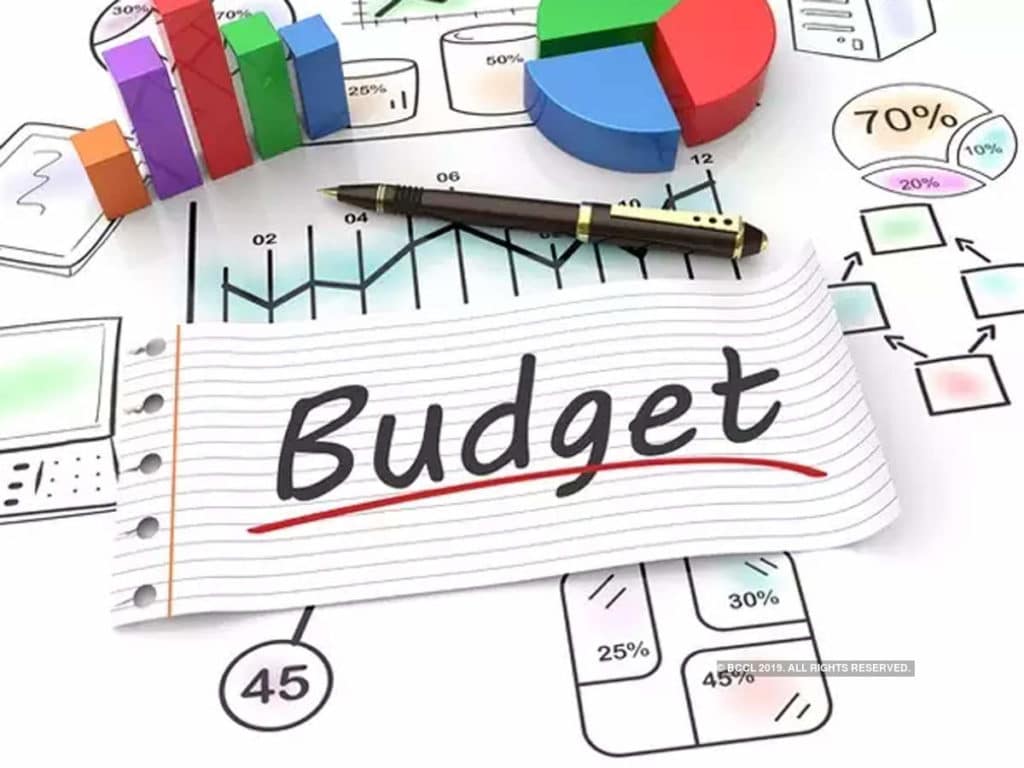
The budget is prepared by the Government at all levels, i.e., the Central Government prepares its respective annual Budget.
Estimates expenditures and receipts are planned as per the objectives of the Government.
The budget is presented in the parliament on such a day, as the President may direct. By conventions, it is presented, before it can be implemented.
It is required to be approved by the parliament.
OBJECTIVES OF GOVERNMENT BUDGET:
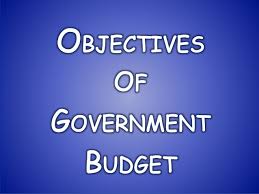
- Reallocation of Resources
- Economic Stability
- Reducing inequalities in Income and Wealth
- Economic Growth
- Management of Public Enterprises
- Reducing Regional Disparities
Reallocation of Resources:
Through the budgetary policy, the Government aims to reallocate resources to the economic and social priorities of the country.
- Tax Concessions or Subsidies.
- We are directly producing goods and services.
Reducing Inequalities in income and wealth:
Economics inequality is an inherent part of every economic system.
The government aims to reduce such inequalities of income and wealth through its budgetary policy. The government aims to influence the distribution of income by imposing taxes on the rich and spending more on the welfare of the poor.
Economic Stability:
The government budget is used to prevent business fluctuations of inflation and deflation from achieving the objective of economic stability. Policies of the surplus budget during inflation and deficit budget during deflation help to maintain the stability of prices in the economy.
Management of Public Enterprises:
There are a large number of public sector industries, which are established and managed for the social welfare of the public. The budget is prepared with the objective of making various provisions for managing such enterprises.
Economic Growth:
The growth rate of a country depends on the rate of saving and investment. For this purpose, the budgetary policy aims to mobilize sufficient resources for investment in the public sector. Therefore, the Government makes various provisions in the budget.
COMPONENTS OF BUDGET:

- Revenue Budget:
- Revenue Receipts
- Revenue Expenditure
- Capital Budget:
- Capital Receipts
- Capital Expenditure
Revenue Budget:
Components of the budget refer to the structure of the budget. Two main components of the budget are:
Revenue Receipts:
Revenue Receipts refer to those receipts that neither create any liability nor cause any reduction in the assets of the Government. They are regular and recurring, and the Government receives them in its normal course of activities.
Revenue Receipts satisfy these conditions.
The receipts must not create a liability for the Government.
The receipt must not cause a decrease in the assets of the Government.
Sources of Revenue:
There are two types of Revenue Receipts of the Government.
- Tax Revenue:
Tax Revenue refers to the total of receipts from taxes and duties imposed by the Government.
For example, Direct tax and Indirect Tax.
Tax is a compulsory payment. No one can refuse to pay for it. Tax receipts are spent by the Government for the common benefit of people in the country. Direct taxes are taxes that are imposed on the property and income of individuals and companies are paid directly by them to the Government. They are imposed on individuals and companies. Indirect Taxes refer to those taxes which affect the income and property of individuals and companies through their consumption of expenditures.
How to Classify a Tax as Direct or Indirect?
A tax is a direct tax if its burden cannot be shifted. For example, Income tax is a direct tax as its impact and incidence are on the same person.
- Non-Tax Revenue:
It refers to receipts of the Government from all sources other than those of tax receipts.
Interest: The government receives interest on loans given by it to state government union territories.
Fees: Fees refer to charges imposed by the Government to cover the cost of recurring services provided by its court fees registration fees import fees etc.
License Fees: It is a payment charged by the Government to grant permission to keep a commercial vehicle.
Fines and Penalties: They refer to that payment, which is imposed on lawbreakers, fines for jumping light, etc.
Escheats: It refers to claims of the Government on the property of a person who dies without leaving a will.
Gifts and Grants: The government receives gifts and grants from a foreign government.
Forfeitures: These are in the form of penalties that are imposed by the court for non-compliance with others’ contracts, etc.
Revenue Expenditure:
Revenue Expenditure refers to the expenditure, that neither creates any liability nor causes a reduction in any liability of the Government. It is recurring in nature. It is incurred on the normal functioning of the Government. The expenditure must not create an asset of the Government payment expenditure as it does not create any asset. Metro is not a revenue expenditure as it leads to the creation of an asset for the Government.
Capital Budget:
The main two components of the Capital Budget are:
- Capital Receipts:
Capital Receipts refer to those receipts which either create liability or cause a reduction in the assets of the Government. They are non-recurring and non-routine.
The receipts must create a liability for the Government. Borrowings are capital receipts as they lead to an increase in the liability of the Government.
However, the tax received is not a capital receipt as it does not result in the creation of any liability.
The receipts must cause a decrease in the assets; receipts from the scale of the share of public enterprises is a capital receipt as it leads to a reduction in assets of the Government.
Capital receipts are of three types:
A. Borrowings:
They are the funds raised by the Government to meet excess expenses.
Government Open Market.
Reserve Bank of India.
Foreign Government.
B. Recovery of Loans:
The government grants various loans to the state Government or Union Government.
C. Other Receipts:
These include Disinvestment and small savings. Disinvestment refers to the act of selling a part of the whole of shares of a selected public sector undertaking held by the Government. Small saving refers to funds raised from the public in the form of post office deposits.
Items Categorized as Revenue and Capital Receipts:
- Loans from the World Bank: It is a capital receipt as it neither creates any liability nor reduces any asset.
- Corporation Tax: It is a revenue receipt as it neither creates any liability nor reduces any assets.
- Grants received from World Bank: It is a revenue receipt as it neither creates any liability nor reduces any asset of the Government.
- Profits of Public Sector Undertaking: It is a revenue receipt as it reduces the assets of the Government.
- Foreign did against earthquakes victims: It is a revenue receipt as it neither reduces any asset of the Government.
- Capital Expenditure:
It refers to the expenditure, that either creates an asset or reduces any liability of the Government. It is non-recurring. It adds to the Capital Stock of the economy and increases its productivity through expenditure. Example: Loan to states and union territories expenditure on building roads, flyovers, etc.
The expenditure must create an asset for the Government. For example, the Construction of the Metro is a capital expenditure as it leads to the creation of the asset. However, any amount paid as salaries is not capital in the assets.
How to Classify Revenue or Capital Expenditure:
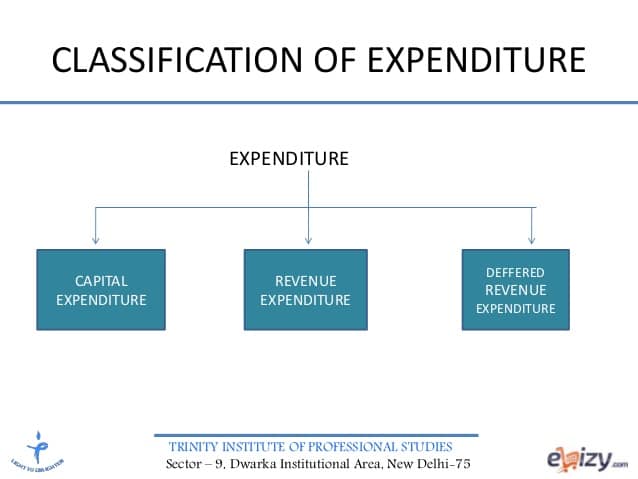
An expenditure is a capital expenditure if it is either an asset or reduces a liability.
An expenditure is revenue expenditure if it neither creates any asset nor reduces any liability.
- Subsides:
It is a revenue expenditure as it neither creates any asset nor reduces any liability of the Government. - Grants Given to State Government:
It is a revenue expenditure as it neither creates an asset nor reduces any liability of the Government. - Repayment of Loans:
It is capital expenditure as it reduces the liability of the Government. - Purchase of 20 Cranes for the Flyover:
It is a capital expenditure as it creates an asset to the Government. - Expenditure Incurred on Administration:
It is a revenue expenditure as it does not reduce the liability. - Payment of Salary to Staff:
It is a revenue expenditure as it neither creates any asset nor reduces any liability of the Government. - Construction of School Building:
It is a capital expenditure as it increases the asset of the Government.
Plan and Non-Plan Expenditure:
Planned expenditure refers to the expenditure that is incurred on the programs detailed in the current five-year plan.
Non-planned expenditure refers to the expenditure other than the expenditure related to the current five-year plan.
Difference Between Plan & Non-Plan Expenditure:
Plan Expenditure is spent on current development, and investment outlays on non-plan expenditure are spent on the liability of the Government.
Non-planned expenditure is spent on the liability of the Government and arses only when the plans provide such expenditure.
Developmental and Non-Developmental Expenditure:
Developmental Expenditure refers to the expenditure, which is directly related to the economic and social development of the country. Expenditure on such services is not a part of the essential functioning of the Government.
Non-Development Expenditure refers to the expenditure which is incurred on the essential goods and services of the Government. It does not directly contribute to economic development, but it indirectly helps in the development of the economy. Such expenditures are essential from the administrative view.
TYPES OF BUDGET:
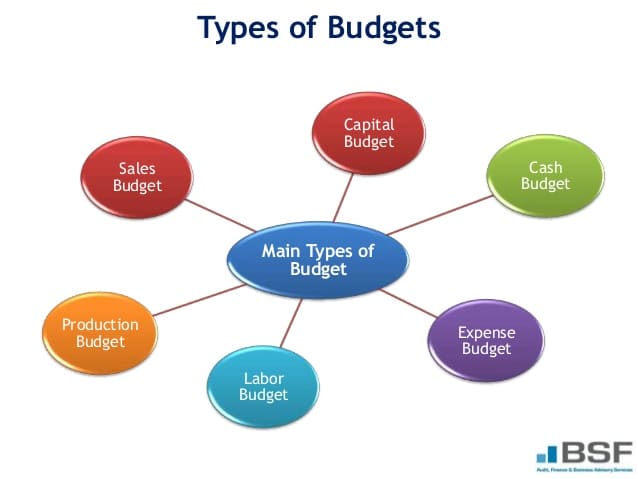
- Balanced Budget
- Surplus Budget
- Deficit Budget
Budgetary Deficit:
A budgetary Deficit is defined as the excess of total estimated expenditure over total estimated revenue when the Government spends more time it collects; then, it incurs a budgetary deficit concerning the budget of the Indian Government.
- Revenue Deficit
- Fiscal Deficit
- Primary Deficit
Revenue Deficit:
Revenue Deficit is concerned with the revenue expenditure and revenue receipts of the Government. It refers to the excess revenue expenditure of revenue receipts.
Implications:
It indicates the inability of the Government to meet its regular and recurring expenditures in the proposed budget.
It implies that the Government is dissolving, i.e., the Government is using up saving from other sectors of the economy to finance its expenditure. The use of capital receipts for meeting the extra consumption expenditure leads to an inflationary situation in the economy.
Fiscal Deficit:
The fiscal Deficit presents a more comprehensive view of budgetary imbalances. It is widely used as a budgetary development in India. The extent of the fiscal deficit is an indication of how far the Government is spending.
Implications:
A fiscal Deficit indicates the total borrowings requirements of the Government.
Sources of Financing Fiscal Deficit:
Borrowing: Fiscal Deficit can be met by borrowings from internal sources or external sources.
Deficit Financing: The government may borrow from RBI against its securities to meet the fiscal deficit.
Primary Deficit:
Primary Deficit refers to the difference between the fiscal deficit of the current year and interest payment on the previous borrowings.
Implications:
It indicates how much of the Government borrowings are going to meet those expenses other than the interest payments. The difference between fiscal deficit and primary deficit shows the number of interest payments on the borrowings made in the past.
“So Zero primary deficit indicates the interest commitments of the Government.”
Union Budget Estimated for 2017-18:
| 1 | Revenue Receipts | 15,15,771 |
| 2 | Capital Receipts (2a+2b+2c) 2a. Recoveries of Loans 11,932 2b. Other Receipts 72,500 2c. Borrowing & Other Liabilities 5,46,532 | 6,30,964 |
| 3 | Total Receipts (1+2) | 21,46,735 |
| 4 | Scheme Expenditure (4a+4b 4a. On Revenue 6,74,057 4b. On Capital 2,71,021 | 9,45,078 |
| 5 | Expenditure on other than schemes (5a+5b) 5a. On Revenue Account 11, 62,877 (It includes interest payment of 5, 23,078 INR). 5b. On Capital Account | 12,01,657 |
| 6 | Total Expenditure (4+5) | 21,46,735 |
Criticism about Government Budget:
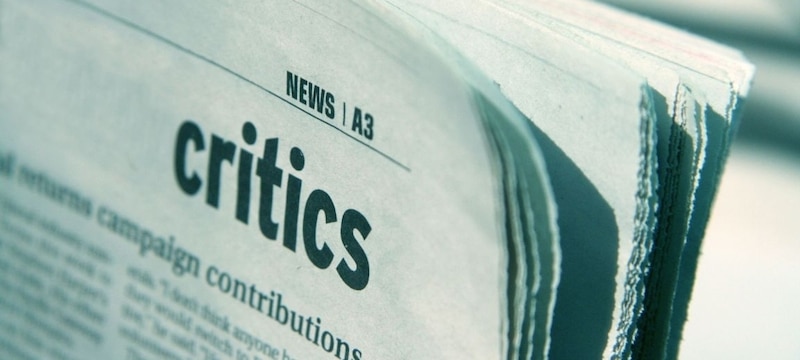
This Budget is all Talk/Hype and no substance:
If there is one cliché that has been uttered even more than Ravi Shastri’s tracer bullet, it is this. There’s a reason this gets the #1 Position.
Hell, you may be on substance, but you can still say that the budget has no substance, and it would pass for acceptable criticism.
This Budget has Nothing for the Common man:
Here’s another rule for a spokesperson or a member or a supporter in the opposition – the budget can never have anything for the common man. It doesn’t matter even if the budget abolishes taxation completed. It still DOES NOT have anything for the common man.
The Budget is idealistic, not practical:
This is a more subtle, politically correct criticism of the budget, particularly suitable for the rare occasion when everyone else seems to think that the Finance Minister has nailed the Budget. When a budget is so good that it’s just extremely difficult to criticize, this is the statement to use.
What is being done to fight corruption? What about black money?

This one is the go-to line if you’re a self-styled anti-corruption crusader. You don’t have to care two hoots about the budget. For you, this is another ripe opportunity to pounce on and exhibit your “Anti-Corruption” by saying that the budget has nothing about fighting corruption and bringing black money back. Easy, because no budget likely will. At most, the budget will make mention the Government being “Committed” to fighting against Corruption.
My Opinion About Government Budget:
After listening to a long 2-hour speech by the finance minister, I had some equally frustrating and fascinating thoughts, moving beyond the usual debate of “will this be good economics or bad politics?” and vice-versa. The two can co-exist. As a whole, the Budget needs to move away from populist and prudent definitions. It needs to be examined on the merit of what it does to different classes of people.
It had a huge impact, and I had to take a bit of time properly digest what I heard. I had to contextualize it with the other Budget (in the past years) as well as the needs of the current scenario. These are a few thoughts about the Budget.
Acknowledgment:
I would like to express my special thanks of gratitude to __________ my economics teacher as well as the one who allowed me to do this project on the topic “Government Budget” which also helped me in doing a lot of research and I came to know about so many things.
This project would not have been completed without the guidance of my economics teacher. She has been a constant source of inspiration and a helping hand in the completion of this project. I would also like to thank all the individuals who served me in this project.
CERTIFICATE:
This is to certify XYZ of Class XII has been completed his / her Economics project on the topic of Government Budget and its components under the Guidance of XYZ during the academic year 2018-2019 as per the guidelines issued by the Central Board of Secondary Education (CBSE).
Teacher’s Signature
Examiner’s Signature
Bibliography:
- Internet
- Books
- Friends
- Family
- Teachers
DOWNLOAD PDF OF THE PROJECT
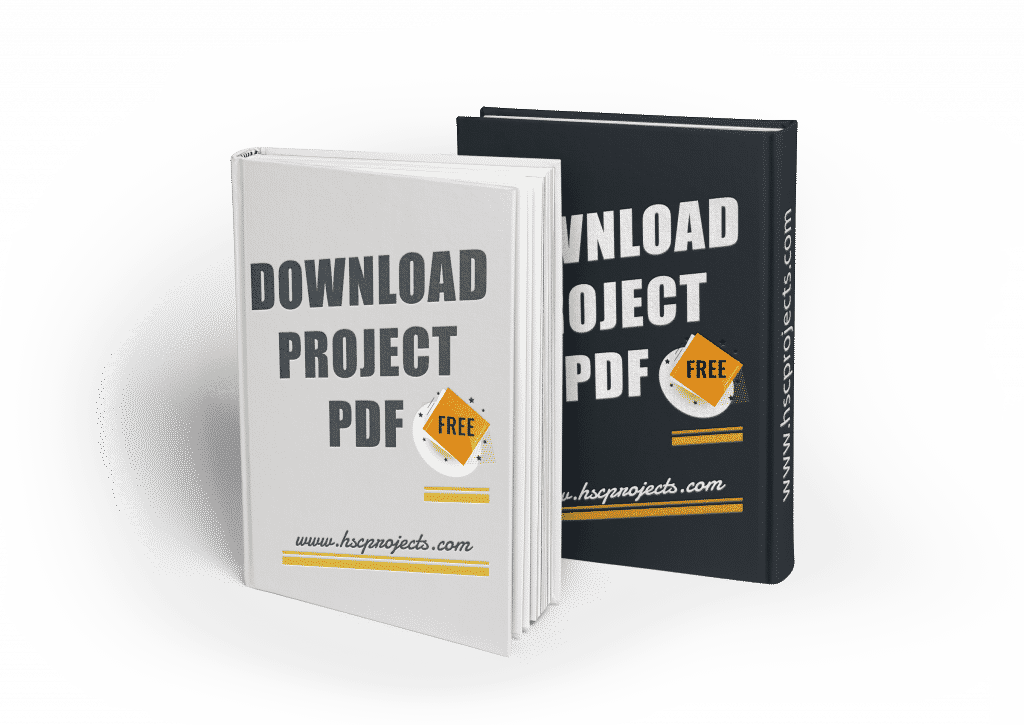
Password: hscprojects.com
In order to download the PDF, You must follow on Youtube. Once done, Click on Submit
Follow On YoutubeSubscribed? Click on Confirm
Download Economics Project on Government Budget – Class 12 CBSE PDF







exclusive fantastic!!!!
Can you please send me this project
You can download it by clicking on download pdf button